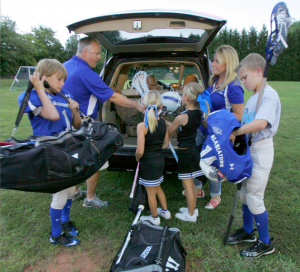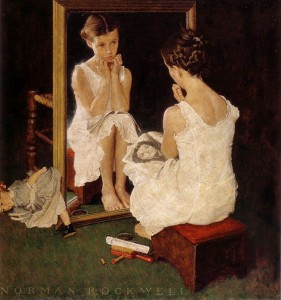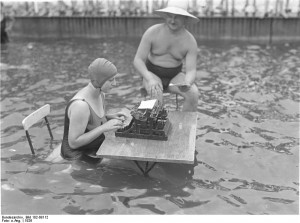To throw my hat into the ring for DML 2014, as well as continue processing/writing about my educational research experiences for the purpose of my dissertation, I crafted these three, short accounts.
- How Was the Asteroid Belt Formed?: A Middle School Apprentice and PhD Candidate Explore Digital Research & Community Resources
“My name is Esau and I am in the 7th grade at John Muir Middle School on Vermont and 59th. I am participating in the Spark Program, which helps to keep students in school so they don’t drop out before high school graduation…”
When I agreed to be a Spark mentor (sparkprogram.org) for the spring 2013 semester, I envisioned teaching my apprentice about my job by recruiting him/her as a key informant on 21st century learning. But I discovered, like so many educators before me, that the best-laid plans must be scrapped when a student has other ideas. Instead, my apprentice recruited ME to HIS research project.
In our short talk, Esau and I will explain how we used a blended model of digital and experiential outreach to conduct research and explore resources throughout the community. We will also speak about our development of information literacy and our discovery of both the public’s limited understanding of science and scientists’ limited understanding of the public.
Our mission was to investigate Esau’s hypothesis: “My theory is the Asteroid Belt used to be a planet or one of Jupiter’s moons. It was brought into Jupiter’s atmosphere by its gravitational pull, broken up into millions of asteroids, and spit out into space — forming the Asteroid Belt.” Esau and I emailed USC professors and scientists at the Jet Propulsion Laboratory (JPL), conducted 12 “man-on-the-street” surveys, attended a USC astronomy lab, searched online, went to a USC science library, and visited the California Science Center. We created a wiki to annotate our journey and present our results (amazinguniverse.wikispaces.com).
Our learning process seamlessly blended the digital and the experiential. The ease with which Esau navigated this process is noteworthy since John Muir Middle School, a Title I school that serves reduced lunch to 80% of its students, cannot afford extensive digital media and/or regular field trips. My experience with Esau suggests avenues for further research, interrogating whether and how families and/or community partners prepare youths for both digital and “real world” engagement.
While Esau was quite comfortable with digital media, he believed in the inherent superiority of books over online information. Thus, our process also scaffolded information literacy, looking at source credibility and evaluating relevance.
In terms of Esau’s theory, eight participants thought it was possible, four did not know whether it was possible, and zero thought that his theory was impossible. This helped us to identify a gap in the public’s understanding of science since the JPL scientist quickly dismissed Esau’s theory. It also illuminated a gap in this scientist’s (and potentially more scientists’) understanding of the public, as he contended, “You might as well be asking them about the dining habits of unicorns or flying monkeys.” We think the blatant impossibility of an apricot-eating unicorn versus a Jupiter moon-originated Asteroid Belt is not equivalent. This suggests that, for community-oriented scholars like us, there is space for service.
- Exploring Media Literacy and Transmedia for Peace: Collaborations Among Students and Teachers From the University of Southern California and the Los Angeles Unified School District
This short talk will review an effort to support teaching and learning about both media literacy and violence/peace-making.
PARTNERS
During the spring of 2013, USC School of Cinematic Arts Associate Professor Vicki Callahan designed two projects in which her pupils in IML 420: New Media for Social Change would actually make new media for social change. To complete these projects, her pupils needed to document Los Angeles Unified School District (LAUSD) students’ media perspectives and negotiations of violence/peace-making. Callahan intended for her pupils to share back with LAUSD these tailored projects, potentially facilitating social change. But this wasn’t all; Callahan also wanted her pupils to give back by teaching a media literacy mini-course to the participating LAUSD students.
The USC Dornsife Joint Educational Project (JEP) grouped Callahan’s 17 pupils into five teaching teams and assigned each team to a LAUSD classroom: two 3rd grade classes, two 6th grade classes, and a combined 7th/8th grade class. Laurel Felt, a media literacy advocate and JEP Instructional Design Specialist, co-created with Callahan a media literacy curriculum, refined lesson plans with pupils, and observed each teaching team.
LINKING LEARNING EXPERIENCES
USC pupils described their USC studies and their LAUSD teaching as disconnected. Many felt unprepared to teach media literacy, especially to eight-year-olds. Incorporating data collection troubled some pupils, while others resented the outreach’s extra work and time commitment, and still others struggled to manage group dynamics.
REFLECTIVE PRACTICE
Despite these issues, each USC participant created a useful video featuring LAUSD students speaking about media representation and/or heroes; they screened these for the LAUSD students. Observed participant DB, “I found the kids to be surprisingly more open-minded regarding issues about diversity and its representation than I had originally expected” (2013). Wrote participant SO, “I think they got the idea that one should question what they watch” (2013).
The USC pupils’ last project was to collaboratively design a transmedia “story|storyworld about non-violence and peace-building that brings in the perspectives of your LAUSD students as well as yourself” (Callahan, 2013). Reflected participant KL, “Our kids, specifically, had a much easier time coming up with violent issues than peaceful ones in our brainstorming session… Many times, the kids would mention a violent issue with the complete awareness that it was morally reprehensible yet they would still treat it jokingly.”
Post-data collection, the USC pupils collectively created Break the Cycle, a transmedia property that showcases seven fictional youths’ various negotiations of violence and peace-making. The site offers information about each character via bios, webcomics, and social media accounts; it also hosts an interactive game.
LINKING LEARNING EXPERIENCES REVISITED
Whether and how the LAUSD students engaged with the transmedia property is ambiguous. The USC pupils finished this project after their final site visits. Representatives from each teaching team emailed the Break the Cycle URL to their host teacher; however, issues with firewalls, computer access, and/or scheduling might have prevented the LAUSD students from exploring the site themselves.
- Making Change as We Laugh Along: How Improv Games Make a Difference in the World
What do improvisational theater (improv) games have to do with social change? A lot! Improv games offer a no-tech context to practice negotiating trust and exploring identity. Their execution involves learning through play, working collaboratively, designing messages, commenting on lived realities, supporting teammates, embracing flexibility, and respecting ethics; in terms of media literacy, improv games also provide opportunities to demystify genre, remix pop culture, and critique celebrities. This workshop will explain improv games’ origins, briefly explore two case studies, and invite participants to play!
HISTORY
In the 1940s, social worker Viola Spolin developed a suite of theater games to stimulate creative expression and build community among Chicago’s diverse immigrant populations. Spolin’s son Paul Sills, founder of legendary theater The Second City, introduced these games to his comedic ensembles to help them hone their craft. But Laughter for a Change (L4C), a non-profit founded by The Second City director Ed Greenberg, uses improv games to serve the people and functions that Spolin originally intended: building confidence and connections among members of underserved communities.
CASE STUDY #1: RFK
During 2011-2012, L4C ran an after-school workshop at the Robert F. Kennedy Community Schools (RFK) with 12 low-income, Latino high school freshmen. Greenberg’s first goal was to establish a “safe space,” or supportive context in which participants felt empowered to take risks and play freely; this is very similar to the “magic circle” (Huizinga, 1938; Salen & Zimmerman, 2003). Participants reported less shyness, more self-confidence, increased comfort with public speaking, greater participation in academic classes, a broader view of teamwork, and fun (Felt & Greenberg, 2013).
CASE STUDY #2: KYCC
During the summer of 2013, L4C ran an 8-week workshop at the Koreatown Youth Community Center (KYCC) with nine mixed-income, Korean-American middle school students who had recently participated in L4C at KYCC’s 2012-2013 after-school program. L4C Comedy Mentors Ruth Silveira and Maggie Marion shared their perspectives on participants’ take-aways. Marion observed that, within the stable summer camp context, “…the kids began being able to trust each other in a way that isn’t possible when people are coming in and out and having different experiences.” This both illuminates how a safe space is essential to meaningful improv play, and slightly differentiates its nature from the magic circle. The mentors also reported participants’ increased comfort with both voicing “what was in their own heads” and “making mistakes.” Said Silveira, “They had to overcome [the desire of] getting the ‘right’ answer, doing it ‘right’… They didn’t like being ‘wrong.’ We had to get the scene player to support this ‘mistake,’ make it part of the experience…. More specifically, I think it’s about breaking them out of the idea that everybody thinks the same way.”
WORKSHOP
DML participants will practice improv’s basic tenet of “Yes and” and engage in team-building by playing the Mirror, Conducted Story, and World’s Worst games. They also will process their play experiences and discoveries via guided debriefings.




